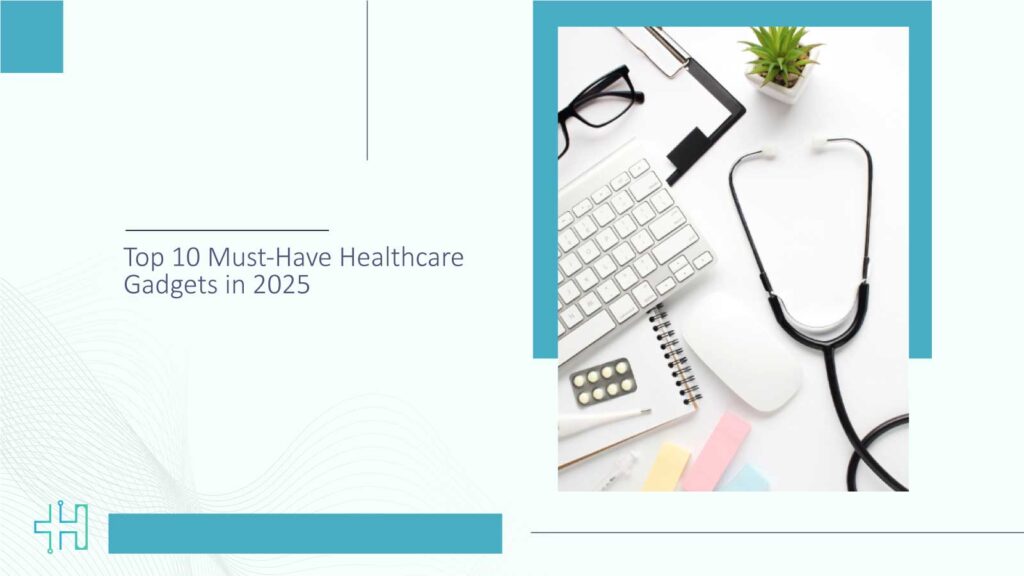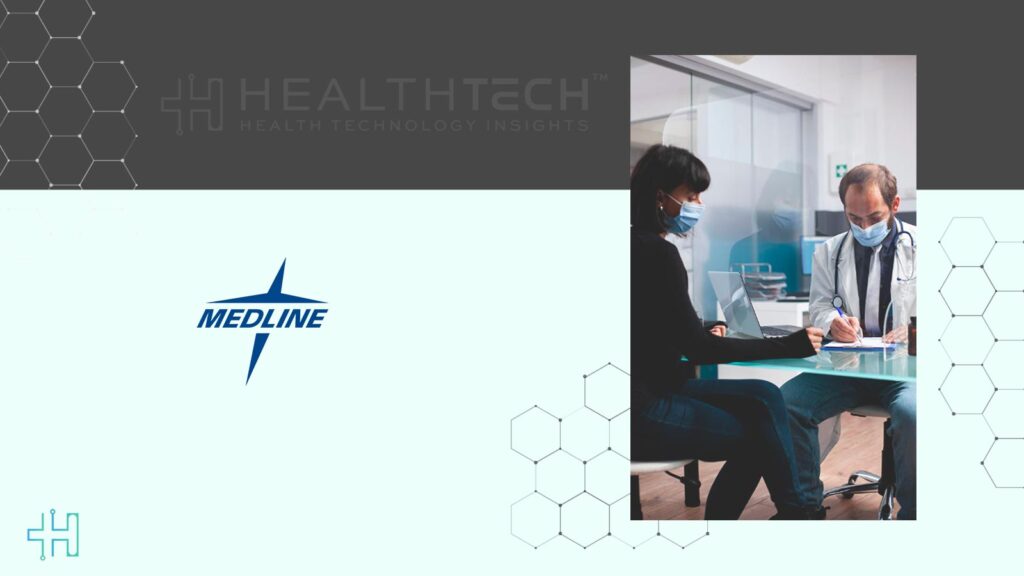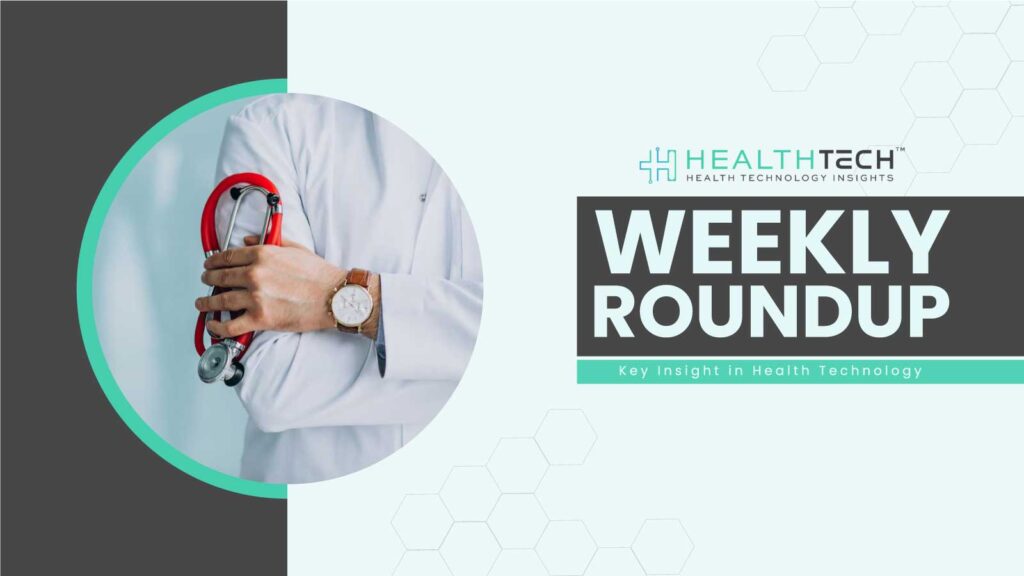Imagine walking into a clinic where your smartwatch syncs instantly with your doctor’s tablet, your vitals are tracked in real-time, and your AI-powered glucose monitor adjusts your diet recommendations before you even ask. It can become a reality in 2025, powered by healthcare gadgets that are smarter, smaller, and more connected than ever.
However, these tools aren’t just cool tech. They’re lifesavers. Productivity boosters. Decision-making accelerators. For healthtech leaders, clinicians, and care innovators, the right gadget doesn’t just improve outcomes, it transforms entire systems.
So, whether you’re leading innovation in a hospital network, building healthtech platforms, or just keeping a pulse on what’s next, this curated list of the top 10 must-have healthcare gadgets in 2025 will give you more than product names. You’ll get context, value, and the strategy behind why they matter.
Ready to meet the devices setting the pace for smarter care?
1. Oura Ring Gen 4
This isn’t just a ring, it’s a clinically validated, FDA-cleared wellness tool trusted by everyone from corporate leaders to Olympic athletes. Sleep, readiness, blood oxygen (SpO₂), heart rate variability, and even the detection of atrial fibrillation with photoplethysmography sensors are all monitored around-the-clock by the Oura Ring Gen 4.
Why it matters:
- FDA-cleared AFib detection means serious medical credibility.
- Many healthcare professionals now wear these to track recovery post-shift.
- Wellness programs are adopting Oura for early burnout detection.
“I’ve seen healthtech leaders track burnout early using smart ring data. It’s subtle, smart, and seamless,” says digital health advisor Maria Lin, formerly at Google Health.
2. Circular Ring 2
Circular Ring 2 may not be as hyped in the mainstream, but among digital health insiders, it’s considered a hidden gem. It combines ECG-grade heart monitoring, sleep tracking, and SpO₂ sensors, all packed in a sleek, lightweight band. Its AI algorithms personalize recommendations based on your health data.
Why it matters:
- Tracks early signs of cardiovascular irregularities.
- Offers more data transparency than its competitors.
- Priced lower (~£300), making it attractive for large-scale corporate or clinical wellness rollouts.
3. Withings BPM Vision (Launching U.S. April 2025)
Forget clunky cuffs. Withings BPM Vision is one of the most elegant, clinically accurate blood pressure monitors ever designed. It features an LED touchscreen display and syncs data to a smartphone app in seconds.
Why it matters:
- Ideal for hypertension patients managing BP from home.
- Offers on-screen instructions for accurate self-use.
- Integrates with Apple Health and other EHR-friendly APIs.
4. Novosound Ultrasound Blood Pressure Monitor
This one’s a game-changer. Novosound’s wearable BP monitor uses ultrasound instead of compression to measure blood pressure continuously, which is a breakthrough for patients needing round-the-clock data.
Why it matters:
- Cuffless, continuous BP monitoring in real-time.
- Ideal for patients with vascular conditions or post-op recovery.
- Enables remote patient monitoring (RPM) with clinical accuracy.
5. Withings Omnia Smart Mirror (Development Stage)
Yes, even your bathroom mirror is getting smarter. Every morning, the Omnia smart mirror provides a comprehensive health snapshot by monitoring breathing, posture, skin condition, heart rate, and facial expression (a proxy for mood).
Why it matters:
- Integrates with telehealth consultations.
- Early adopters say it reduces the need for multiple daily device checks.
- It could become a standard wellness device in high-end homes and senior care.
6. IdentifyHer Peri (Launching Mid-2025)
Developed specifically for women in perimenopause and menopause, IdentifyHer Peri tracks hot flashes, HRV, mood changes, and sleep quality. It’s wearable, discreet, and designed with hormone-responsive sensors.
Why it matters:
- First-of-its-kind female-focused wearable in this category.
- Helps providers personalize care plans for hormone changes.
- Supports a long-ignored population segment in digital health.
7. Ozlo Sleepbuds
Not your average sleep earbuds, Ozlo Sleepbuds block noise, deliver white/pink/brown noise, and automatically stop playback when you fall asleep. They’re powered by AI sleep tracking and app-based customization.
Why it matters:
- Clinically proven to improve sleep onset and quality.
- Especially useful for healthcare professionals with shift sleep disorders.
- Pairs with smart home systems like Google Nest and Alexa.
8. CheckMe Heart Monitor Chest Strap
CheckMe offers a 15-minute continuous ECG recording from a chest strap, the perfect companion for high-risk cardiac patients, aging adults, or anyone post-surgery.
Why it matters:
- More accurate than wrist-based ECGs for arrhythmia.
- Easy to pair with apps and share with physicians.
- In-home clinical testing shows high patient compliance.
9. Mirumi Robot Companion
At first glance, Mirumi might look like a plush toy, but it’s an emotionally intelligent robotic companion. It senses vocal tone, facial expression, and physical contact, then responds with mood-based movement or sound.
Why it matters:
- Offers non-verbal emotional support for children, seniors, and neurodivergent users.
- Used in Japan for dementia patients and now piloted in U.S. care homes.
- Adds “empathy as a service” to tech-assisted care.
10. GyroGlove by GyroGear
Designed by a neurosurgeon-turned-engineer, the GyroGlove uses gyroscopic stabilization to reduce hand tremors caused by Parkinson’s or essential tremor. It’s now available for direct purchase.
Why it matters:
- Improves fine motor control, enabling daily activities like writing, eating, or buttoning a shirt.
- Empowers independence in aging populations.
Why These Gadgets Matter
Before we get dazzled by design or wowed by tech specs, let’s ask the real question: Do these gadgets make a difference? In 2025, the answer is a confident yes. The tools listed above aren’t just cool, they’re credible, scalable, and already transforming care delivery across homes, clinics, and corporate health programs. Here’s why they deserve a spot on every healthtech radar.
Real-World Readiness
Every gadget listed here is FDA-cleared, commercially available, or in active pilot programs with measurable outcomes.
Designed for All
Whether you’re a CISO looking at security in connected devices, a startup leader planning a wellness product, or a parent tracking your sleep, these gadgets work across roles and routines.
Empowering Proactive Health
From early disease detection to emotional support, today’s healthcare gadgets allow us to intervene earlier, live healthier, and feel more in control.
The Future of Care Is Already in Our Hands
We’re not waiting on the future anymore, we’re wearing it, listening to it, sleeping next to it, and holding it in the palm of our hands. From gyroscopic gloves that restore confidence to AI-powered rings quietly tracking our heart health, healthcare gadgets in 2025 are redefining what it means to care for ourselves and each other.
This shift isn’t just about innovation; it’s about access, empathy, and empowerment. These tools help us move from reactive treatment to proactive well-being. They blur the lines between home and hospital, tech and touch, data and humanity.
For healthtech leaders, this is your moment to shape the landscape. For caregivers and consumers, it’s a reminder that better health isn’t on the horizon; it’s here, now, and deeply personal.
FAQs
1. What qualifies a gadget as a “must-have” in healthcare?
A gadget is a must-have if it improves care quality, enables remote access, protects patient data, and enhances the user experience.
2. Are these gadgets suitable for everyday users, or just healthcare professionals?
Both! Many are designed for at-home use by consumers while maintaining clinical-grade quality for providers.
3. How do I know if a gadget is HIPAA-compliant?
Look for products certified for data encryption and privacy, and check if they integrate securely with EHR platforms.
4. Do smart rings and AI assistants improve health outcomes?
Yes. Studies show increased adherence to medications, improved sleep metrics, and early intervention in stress-related conditions.
5. Can small clinics or startups afford these devices?
Absolutely. Most gadgets now come with scalable pricing, pilot programs, and cloud-based tools that support even lean teams.
Dive deeper into the future of healthcare.
Keep reading on Health Technology Insights.
To participate in our interviews, please write to our HealthTech Media Room at sudipto@intentamplify.com






